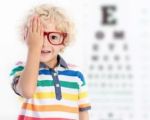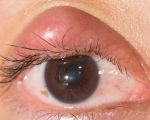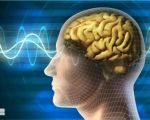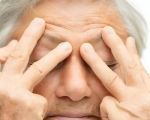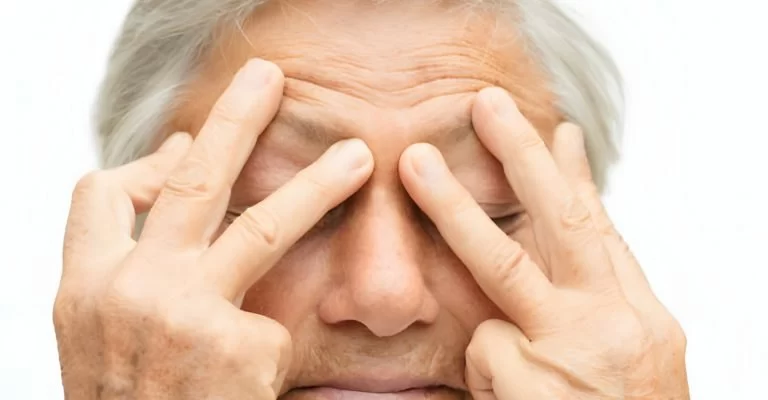
How to Improve Eye Movement Control in Stroke Patients Safely and Effectively
- understanding-visual-impairments-after-stroke – Understanding Visual Impairments After Stroke
- types-of-eye-movement-disruptions – Types of Eye Movement Disruptions in Stroke Patients
- why-eye-movement-rehab-matters – Why Eye Movement Rehab Matters
- rehabilitation-techniques-for-oculomotor-control – Rehabilitation Techniques for Oculomotor Control
- at-home-practices-and-daily-habits – At-Home Practices and Daily Habits
- real-case-a-patient-s-road-to-vision-recovery – Real Case: A Patient’s Road to Vision Recovery
- partnering-with-eye-docs-for-rehabilitation – Partnering with Eye Docs for Rehabilitation
1. Understanding Visual Impairments After Stroke
A stroke can impact various parts of the brain responsible for vision and eye movement, including areas that manage coordination between both eyes. The result may include double vision, difficulty focusing, or complete loss of visual fields. Understanding how to improve eye movement control in stroke patients begins with identifying these visual deficits early.
2. Types of Eye Movement Disruptions in Stroke Patients
Common oculomotor issues post-stroke include strabismus (misalignment of the eyes), nystagmus (uncontrolled eye movements), and difficulty with tracking or saccadic movements (quick, simultaneous eye shifts). Patients may also struggle with convergence—the ability to focus on objects that are near.
These issues often make reading, walking, or even eating incredibly frustrating, contributing to anxiety and withdrawal. That's why targeted intervention is essential.
3. Why Eye Movement Rehab Matters
Eye movement rehabilitation improves not only vision but also coordination, balance, and confidence in daily activities. Patients who engage in structured vision therapy often show significant improvement in spatial awareness and depth perception.
This isn't just about seeing clearly—it's about restoring independence. The journey to regain eye movement control is gradual but deeply impactful when supported with the right therapeutic strategies.
4. Rehabilitation Techniques for Oculomotor Control
Occupational therapists and vision specialists use tailored exercises to stimulate the visual cortex and retrain muscle coordination. These include:
- Pencil push-ups: Encourages convergence by focusing on a close object moving slowly toward the nose.
- Brock string therapy: Uses a string with colored beads to train tracking and depth perception.
- Saccade training: Helps improve the ability to shift focus quickly between targets, useful for reading.
In-clinic sessions may also incorporate computer-based eye-tracking software or virtual reality tools to simulate real-world scenarios safely.
5. At-Home Practices and Daily Habits
Repetition is key to neuroplasticity—the brain’s ability to reorganize itself. Encouraging patients to perform short daily eye exercises, maintain consistent lighting, and limit overwhelming visual stimuli can dramatically support rehabilitation.
Keeping a vision journal to log daily symptoms and improvements also provides useful feedback for clinicians. Families play a major role, offering emotional and logistical support to ensure therapy adherence.
6. Real Case: A Patient’s Road to Vision Recovery
Meet Leonard, a retired teacher from Austin who lost peripheral vision and suffered from nystagmus after a minor stroke. Initial frustration turned into progress after enrolling in a visual therapy program customized by his neuro-optometrist.
After three months of guided therapy, Leonard regained the ability to read without dizziness, and his hand-eye coordination dramatically improved. Today, he hikes with his wife and reads to his grandchildren again—proof that recovery is possible with persistence and the right care.
7. Partnering with Eye Docs for Rehabilitation
When it comes to how to improve eye movement control in stroke patients, the right professional guidance makes all the difference. Eye Docs specializes in post-stroke vision therapy, offering personalized programs tailored to each patient’s neurological and optical needs.
From initial diagnosis to daily therapy plans, Eye Docs supports patients and caregivers through every stage of recovery. Eye movement rehabilitation is not a luxury—it’s a path back to independence, dignity, and visual clarity.

